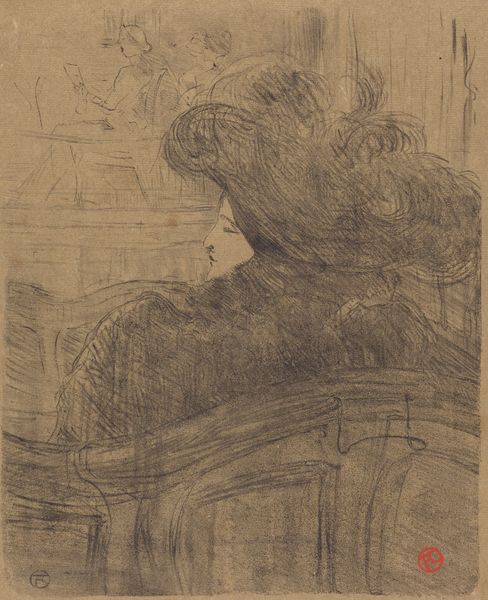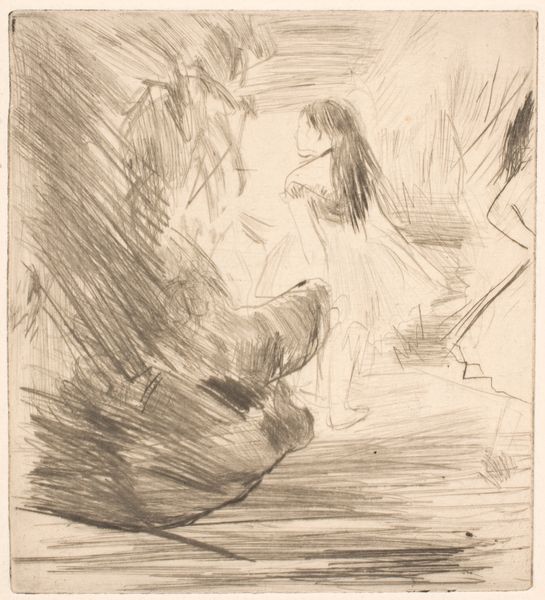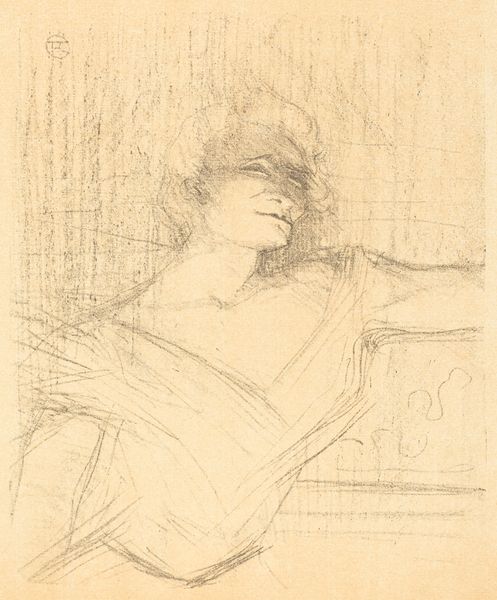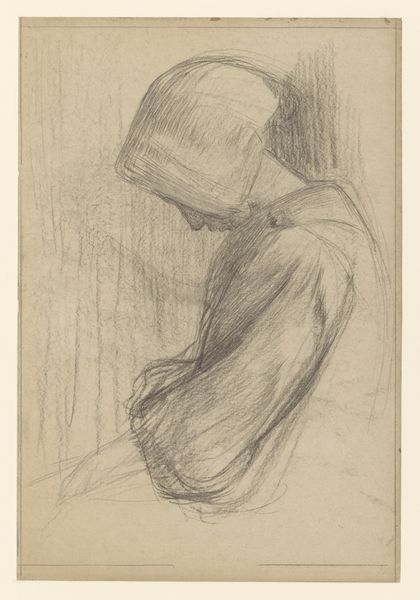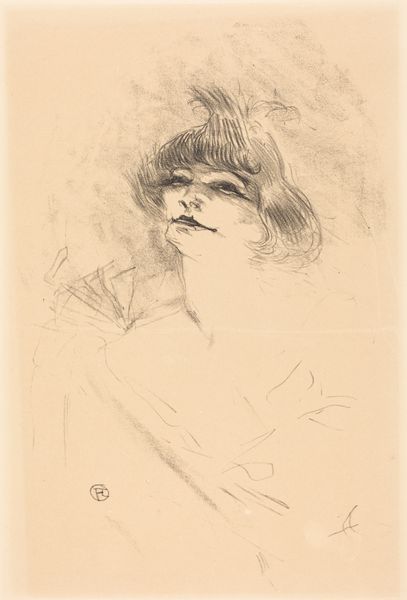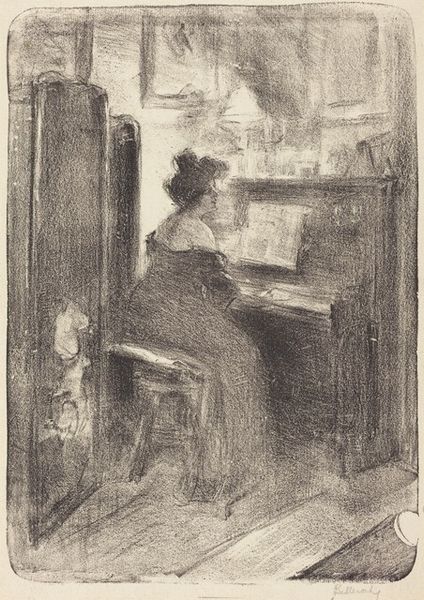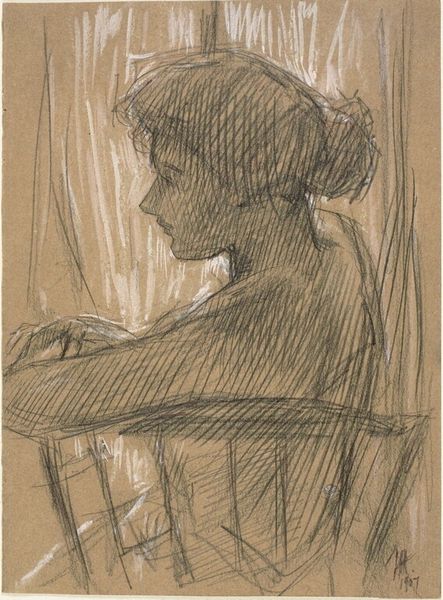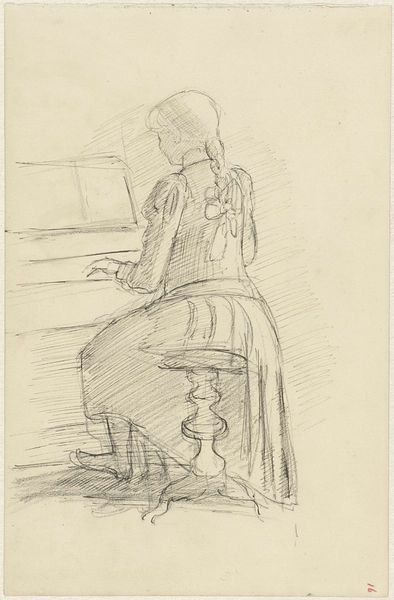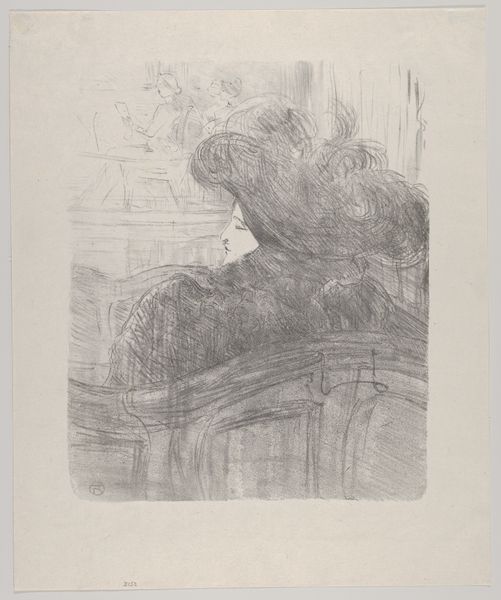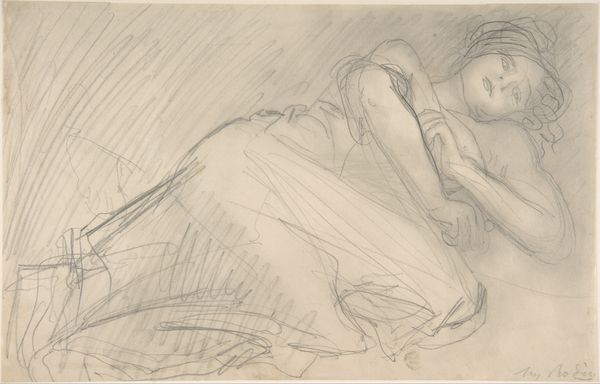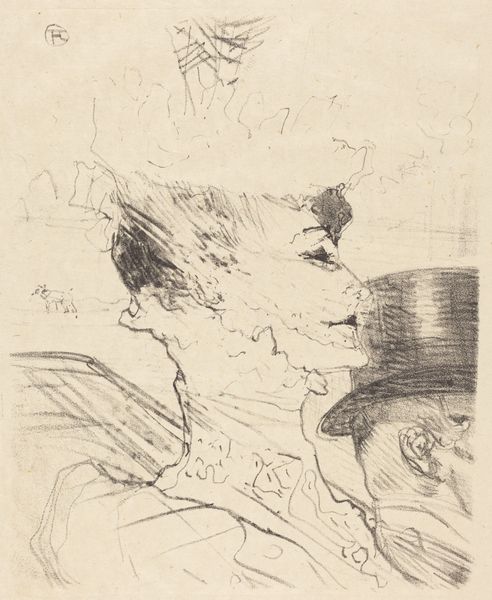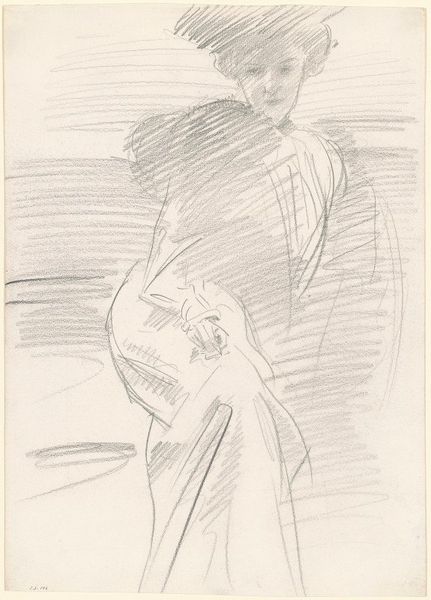
Dimensions: sheet: 39.2 × 31.9 cm (15 7/16 × 12 9/16 in.)
Copyright: National Gallery of Art: CC0 1.0
Henri de Toulouse-Lautrec made this lithograph of Cléo de Mérode, a famous ballerina, at an unknown date, using lithographic crayon and tusche on paper. Toulouse-Lautrec was known for his prints, a medium that allowed for multiples and wide distribution. Lithography involves drawing on a stone or metal plate with a greasy crayon, then treating the surface so that ink adheres only to the drawn areas. The lithographic crayon is critical here; it allowed the artist to create an image with a range of tonal effects. Here, Toulouse-Lautrec's characteristic loose, sketchy lines capture Mérode's elegance and her spectacular hat in a theatre box. The soft, almost blurred quality of the lithographic crayon gives the print a sense of immediacy, as if we’re witnessing a fleeting moment. It’s a great example of how the techniques of printmaking democratized image-making, and became linked to wider social issues, politics, and consumption. When we consider the materials and processes behind this lithograph, we start to question traditional distinctions between fine art and craft.
Comments
No comments
Be the first to comment and join the conversation on the ultimate creative platform.
